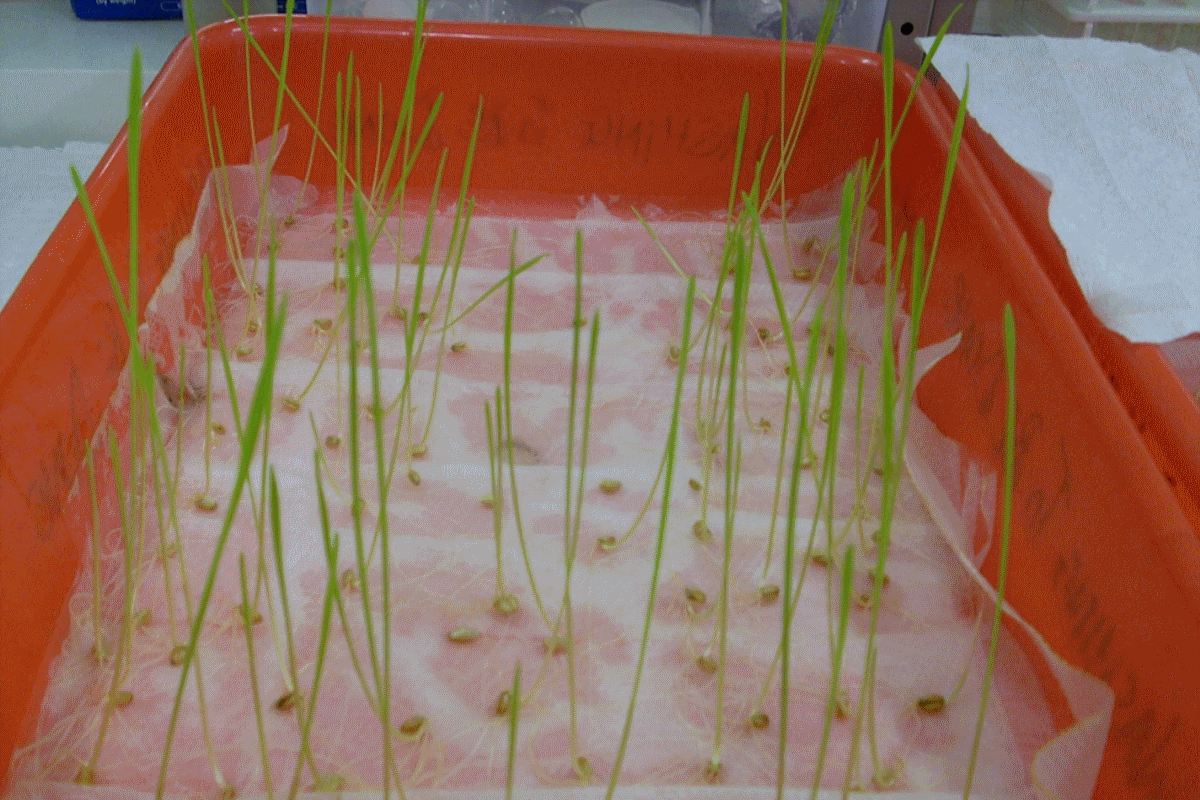A scientist from St Petersburg University: wheat and couch grass can extract toxic metals from contaminated soils

Irina Shtangeeva is a researcher at the Department of Soil Science and Soil Ecology, St Petersburg University. She has studied the ability of wheat and couch grass to accumulate toxic substances. Both plants were capable of absorbing various chemical elements from contaminated soils. Although the plants were able to accumulate high concentrations of toxicants, they could survive under negative environmental conditions.
Interestingly, the plants accumulated toxicants in the aerial parts thus removing them from contaminated soils. This ability of couch grass and wheat to phytoextract toxic metals can be used for effective cleaning of soils. The research findings were published in the journal Environmental Geochemistry and Health.
At present, ecologists often use phytoremediation method for soil decontamination and wastewater treatment. It is a complex of remedial measures in which the key role is played by green plants. Phytoextraction is one of the directions of this method, which makes it possible to remove certain toxic trace elements from contaminated soils using plants-hyperaccumulators. This method is relatively inexpensive. It also does not destroy the soil. However, usually one such a plant is able to accumulate only one element in its aerial parts.
‘In my opinion, the search for new plants that can accumulate one metal is a dead-end job,’ says Irina Shtangeeva, researcher at the Department of Soil Science and Soil Ecology, St Petersburg University. ‘Soil is usually contaminated with more than one toxic trace element. For the successful use of the phytoremediation method, it is therefore important to find such plants that will accumulate a large amount of various toxic elements in the aerial parts without significant damage to plant development.’
The experiments have shown that wheat and couch grass can be promising candidates for the aims of soil remediation. Irina Shtangeeva found that wheat is able to survive in the most adverse conditions and it also efficiently accumulates various substances from the soil. Couch grass is one of the most common weeds in vegetable gardens. It also grows well near the streets with heavy traffic. It is distinguished by its vitality and the ability to accumulate a large amount of different trace elements.
‘Nowadays, you can find a lot of research about the plants capable of accumulating cadmium, nickel, selenium and some other trace elements, the so-called heavy metals. However, many other potentially toxic metals and metalloids are not well-studied,’ says Irina Shtangeeva. ‘That is why I have chosen for my work "unpopular" trace elements that are still little known in the context of phytoremediation: bromine, europium, scandium, thorium, and uranium. Wheat and couch grass have shown the ability to efficiently accumulate all these trace elements simultaneously. As a result, their content in the contaminated soil decreases.’
What happens to the plants after they have absorbed metals from the soil? As Irina Shtangeeva explains, they can be used in the future. In Germany, Switzerland, the USA and some other countries, there are commercial companies that accept these plants for processing and extract the trace elements from them for use in industry.
The scientist emphasises that it is also important to take into account the specific time of cutting the plants. As her other studies show, plants are affected by the circadian rhythm. The concentration of metals in plants can change with the time of day. For example, plants that were collected at noon can contain more contaminants than plants collected in the morning or evening.
Another important factor that helps to make the phytoextraction process more efficient is the use of bacteria. Experiments of Irina Shtangeeva demonstrated that seeds treated with Cellulomonas bacteria allow plants accumulating more metals from contaminated soils. It is quite likely that the bacteria are able to transfer metals into a more available for plants form.
The research has been supported by a grant from the Russian Foundation for Basic Research (project No 18-53-80010).

